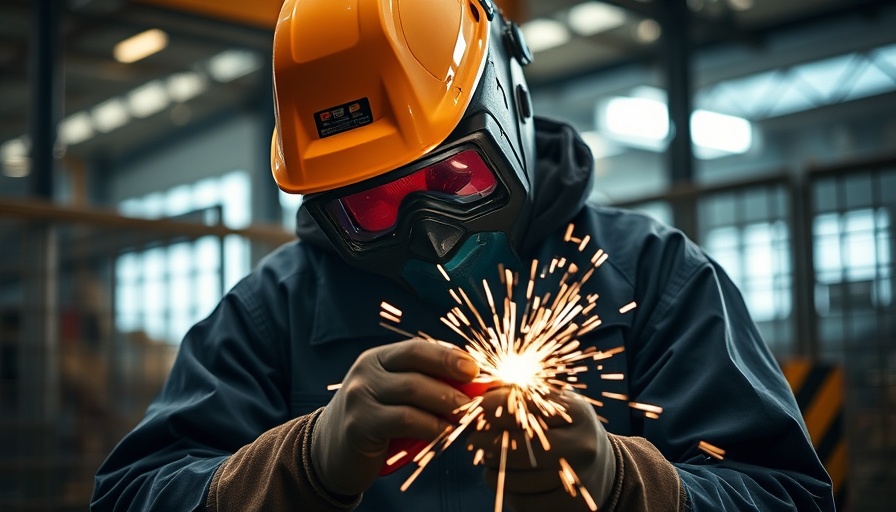
Understanding the Dangers of Welding Fumes
Welding fumes, often overlooked, pose a significant risk to health. While many might associate welding with sparks and molten metal, the inhalation of fumes can lead to serious long-term health issues such as respiratory diseases, neurological damage, and even cancer. Recognizing these dangers is the first step towards implementing effective workplace policies.
From Regulations to Real Solutions: How to Tackle Welding Fumes
As the Dutch labor inspectorate intensifies its checks on compliance, businesses are faced with the pressing question: how can existing policies be transformed into actionable strategies that yield real results? Experts in occupational health underscore the importance of translating broad regulations into specific, manageable actions on the shop floor. This involves assessing the types of welding processes used and the materials being welded, as these can significantly affect the volume and toxicity of the fumes produced.
Tools & Techniques: Effective Measures Against Fume Exposure
Creating a safer welding environment starts with proper engineering controls. For instance, local exhaust ventilation systems can effectively capture fumes at the source, minimizing inhalation risk. Additionally, personal protective equipment (PPE), such as respirators, should be considered mandatory. Implementing regular training and health monitoring programs helps ensure that workers understand the risks and the importance of adhering to safety protocols.
Real-World Implementation: Success Stories
Various organizations have successfully converted policy initiatives into real-world applications. Take, for instance, a mid-sized metal fabrication company that implemented a comprehensive fume control program. Through the installation of enhanced ventilation and regular training sessions, they reported a significant decrease in respiratory-related absenteeism. Sharing these success stories can inspire other companies to adopt similar measures.
Future Trends: Prioritizing Worker Safety
The future holds promise for further advancements in welding safety. Emerging technologies such as automated welding systems minimize human exposure to hazardous fumes, while real-time monitoring devices provide employers with immediate data on air quality. As industries continue to evolve, so too must our approaches to maintaining worker safety.
Final Thoughts: Taking Action for a Safer Work Environment
Organizations must recognize that the health risks associated with welding fumes are not merely a regulatory concern; they impact the overall well-being and productivity of the workforce. By translating policy into practice, businesses not only comply with regulations but also create a healthier work environment that enhances worker morale and efficiency.
For those in positions of leadership or oversight, now is the time to take stock of your workplace practices concerning welding fumes. Engaging in proactive measures—like investing in appropriate technology and fostering an educated workforce—can lead to healthier outcomes for employees and a reduction in long-term costs associated with health-related claims. Make the commitment to act and foster a culture of safety today.
 Rij toevoegen
Rij toevoegen






Write A Comment